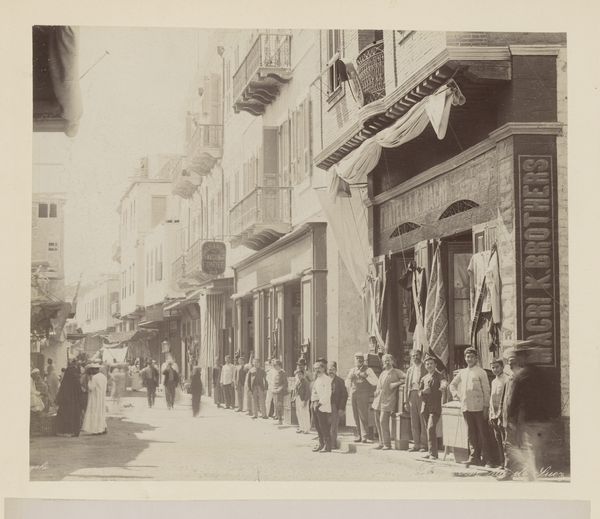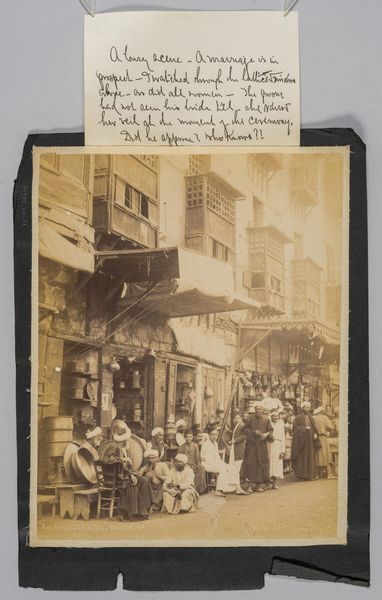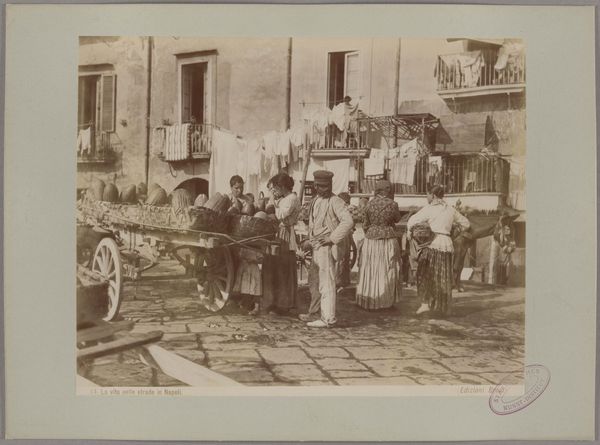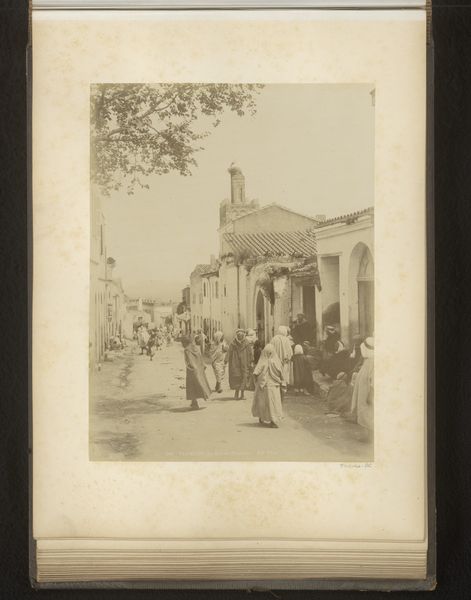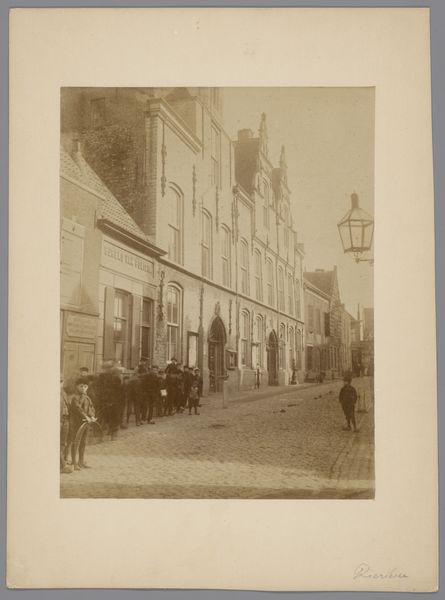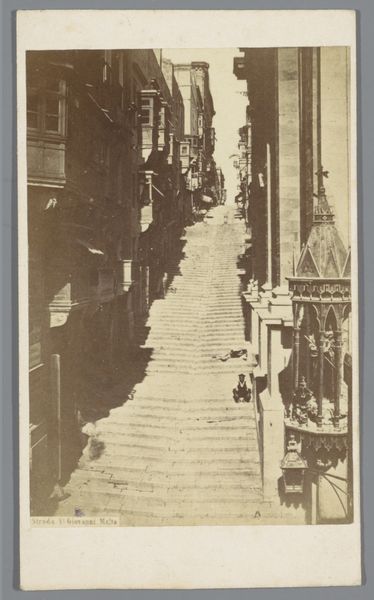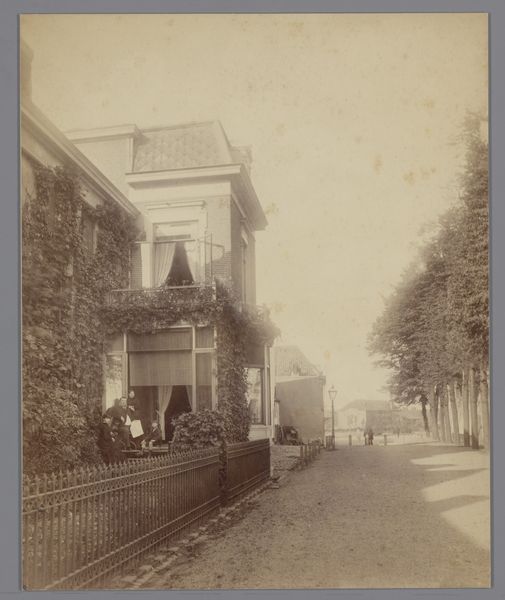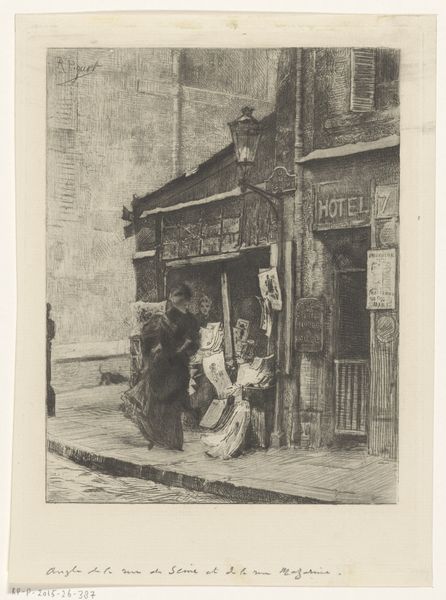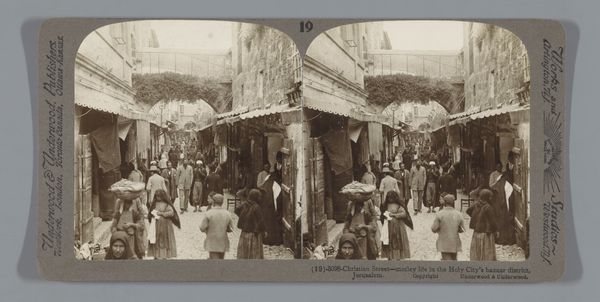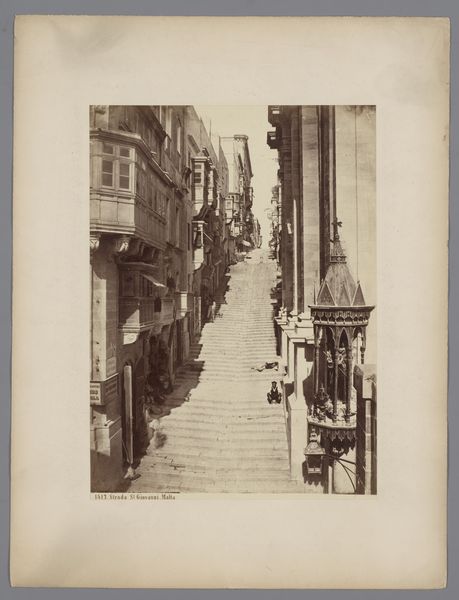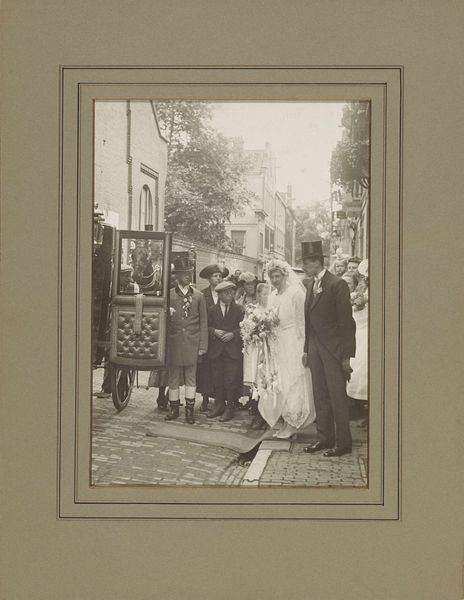
photography
#
landscape
#
photography
#
orientalism
#
genre-painting
Dimensions: height 317 mm, width 247 mm
Copyright: Rijks Museum: Open Domain
Editor: Here we have a photograph titled "Soek in het Medina van Tunis," which translates to "Souk in the Medina of Tunis." It was taken sometime between 1860 and 1900 by photographer Albert. It captures a street scene, but there is something static about it. How do you interpret this work? Curator: This photograph provides a fascinating lens through which to examine Orientalism, a Western perspective that often exoticized and romanticized the "East." Look at how the subjects are arranged; how does the framing impact the narrative being presented, considering the power dynamics inherent in colonial representation? Editor: The composition definitely feels staged, like a theatrical production almost. The people are positioned very deliberately. Curator: Precisely. It prompts us to consider the agency of the individuals depicted. To what extent are they participating in or resisting this Western gaze? Think about the global exchange of goods and ideas during this period. How might this image both reflect and reinforce existing stereotypes? Editor: So, while seemingly a candid snapshot, it’s really constructing a very specific narrative for a Western audience. It makes me question the authenticity of the image. Curator: And that questioning is vital. We have to consider whose perspective is privileged. What’s included, what’s excluded? What ideological work is this "document" performing? This photo, while visually interesting, prompts reflection on how photography participated in shaping perceptions of the "other," the very real impacts it had and continues to have. Editor: This conversation has completely changed my perception. I came in seeing a simple street scene, and now I understand the complex socio-political layers embedded within it. Curator: Exactly! It is through these critical lenses we truly appreciate the artwork’s historical and cultural weight.
Comments
No comments
Be the first to comment and join the conversation on the ultimate creative platform.
